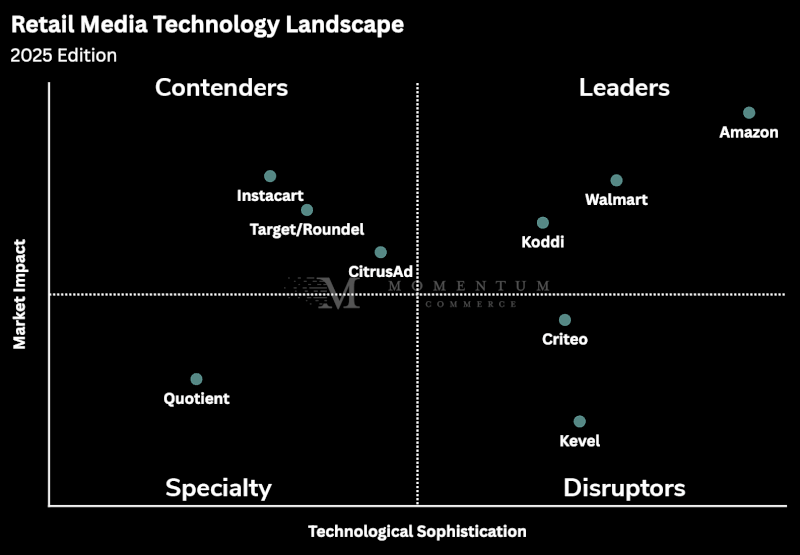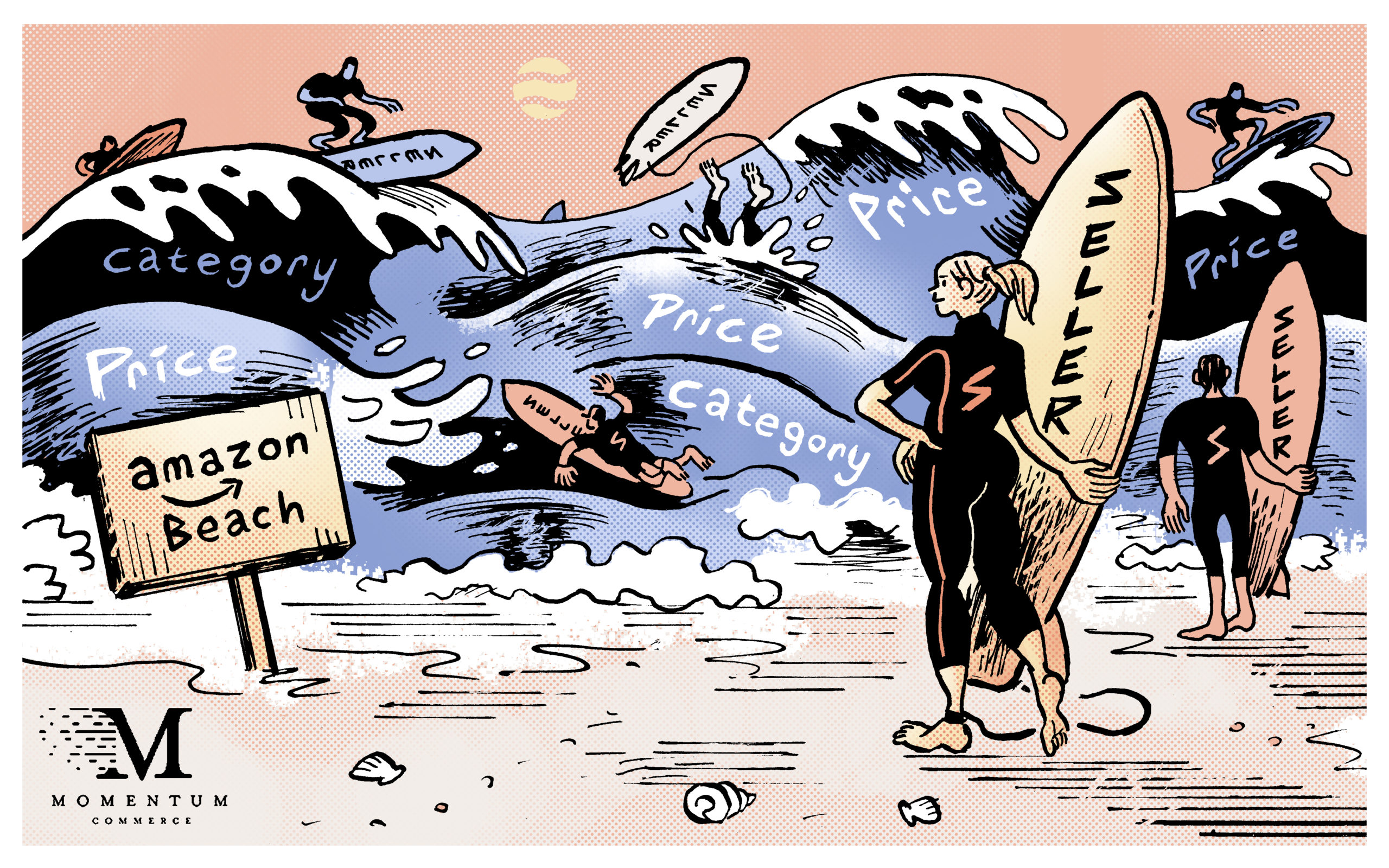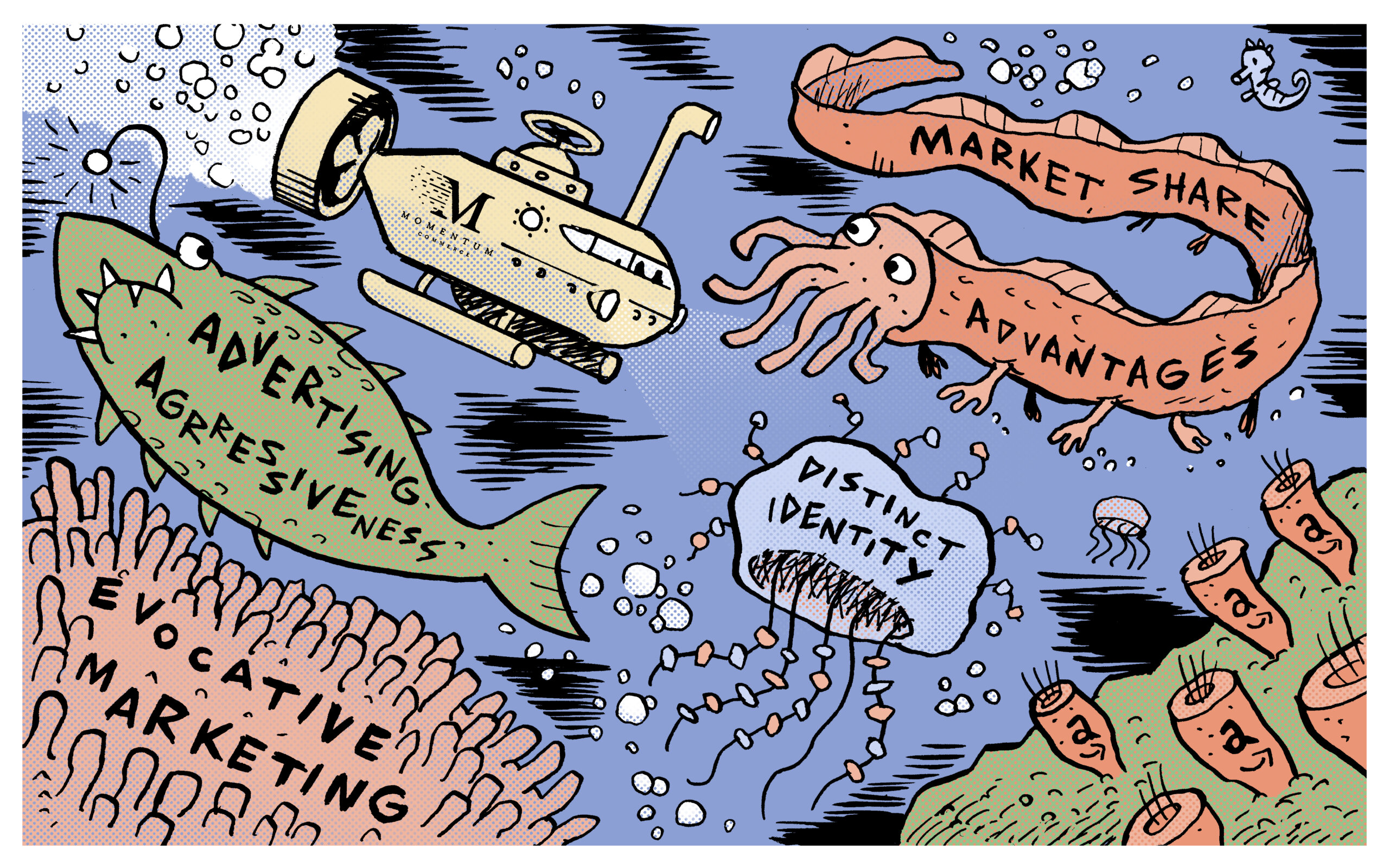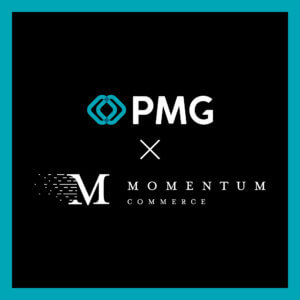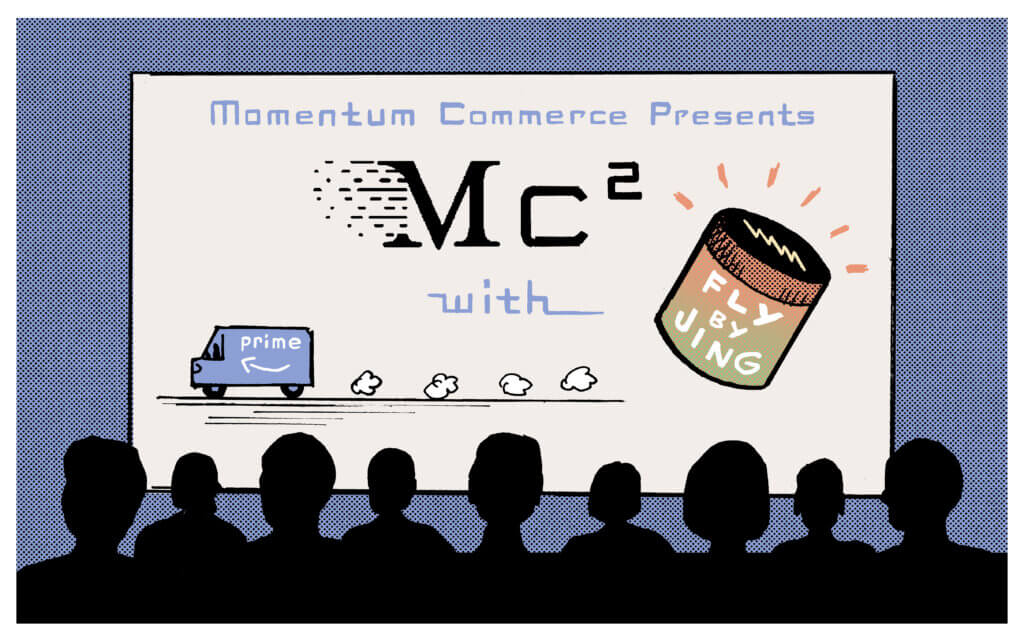
MC Squared: Ian Lewis of FLY BY JING
MC2 is a monthly video series where we chat with brands and practitioners about their most ‘top of mind’ issues related to the eCommerce marketplace. On our first episode, we are excited to welcome Ian Lewis, Amazon Channel Manager at FLY BY JING, one of Momentum Commerce’s clients. Click below to listen in as our Director of Strategy & Insights, Kelsey Scarzello chats with Ian on a variety of topics including SKU ad management, leveraging Amazon in the customer lifecycle, and brand equity.
Do you prefer to read the conversation? Keep scrolling for a full transcript of Episode 1!
Transcript
Kelsey Scarzello: Welcome to MC2 Momentum Commerce’s Monthly Video Series, where we talk with brands and practitioners about their most top-of-mind issues related to the E-commerce marketplace space. Today we’re speaking with Ian Lewis of FLY BY JING. FLY BY JING is a Momentum Commerce client and one of the fastest-growing Asian sauce brands. Ian is the Amazon Channel Manager for FLY BY JING. Welcome to you, Ian!
Ian Lewis: Hey, Kelsey! Thanks for having me.
Kelsey Scarzello: Happy to have you! So I have to kick things off and ask, did you buy anything fun this week during the Prime Big Deals Day sale?
Ian Lewis: A little embarrassed to say that I actually didn’t buy anything on Prime Day, and not because there weren’t great deals out there. But mostly I was too busy trying to sell FLY BY JING Sauces on Prime Day. And by the time I realized that Prime Day was ending I didn’t find anything. I started searching, but I ultimately did not add anything to my cart. Maybe I’ll remember for Cyberweek coming up!
Kelsey Scarzello: And it will be here before we know it. I bought both an SCC and an Extra Spicy, so my household will be fully ‘FLY BY JINGed’. So I want to kick things off with this conversation and ask a question that a lot of advertisers have as they implement advertising on Amazon, and that is, do you need to advertise every product that you have on the platform?
Ian Lewis: That’s a great question, Kelsey, and when I first got here, I definitely thought we should advertise all of our products. The reason is, at the time we had about 11 SKUs. We have about 15 now, and at my previous brand, there were about 12,000 SKUs. So, when I first got here, I was like, ‘Yeah, let’s let’s get all these up, let’s advertise all of them, let’s push them all.’ And then we quickly realized that that just isn’t the best strategy to go with.
Kelsey Scarzello: Totally. And when you’re thinking about what makes sense when determining which products you should or should not advertise? What kind of metrics are you factoring into that?
Ian Lewis: When we were deciding and working on how to hone in and optimize our ad campaigns and either cut spend for certain products or stop advertising entirely, the first thing we looked at was what is our overall strategy as a brand. And, looking at the underlying metrics, we have a huge new customer acquisition channel in Amazon. So, one SKU is getting the majority of those new-to-brand customers. Let’s move more, and add budget to that SKU to better compete with our competitors. And then what are the secondary SKUs? What are our loyalty customers buying? That was kind of the second layer and thing we looked at there and then, of course, profitability as well. So all those factors went into how to shift our budget around to certain SKUs, cut the budget, and stop advertising entirely.
Kelsey Scarzello: Totally. And when you mentioned profitability, is that factoring in the margin for each product, how are you thinking about that?
Ian Lewis: Yeah. So we looked at the contribution margin of each SKU, and if there wasn’t enough there to compete in the market for that SKU, we tested not advertising at all. We actually found that some SKUs, the sales volume didn’t really change that much when we stopped advertising. For other SKUs, the volume decrease was offset by an increase in contribution margin for those SKUs. So there are kind of 2 different scenarios there and then we even saw increases in new-to-brand orders, customer acquisition, and sales rank for our top SKUs.
Kelsey Scarzello: And that’s supported by the ad spend that you decided to push against those products?
Ian Lewis: Yes, exactly. Yeah.
Kelsey Scarzello: Awesome. So that goes into determining whether or not to advertise products. But in your experience, and maybe this isn’t the case for FLY BY JING specifically, but perhaps in a past role, have you made the determination that a product maybe just isn’t fit to sell on Amazon at all?
Ian Lewis: Yeah, definitely at my previous brand that was the case. We haven’t had to make that decision yet here because all of our SKUs sell every day, and some of them might just be things that loyalty customers are looking for to add to their cart to get more into Sichuan cuisine and understand. Pantry items are a good example- we sell things like Sichuan peppers and chilies that our loyalty customers like. It’s not going to be a top product, but they still move, and while we’re not advertising them that heavily, they have their place.
At my previous brand, where we had about 12,000 SKUs and about 1,200 of those were FBA, the rest were sort of made to order, and shipped via FBM. So we definitely cut SKUs, and that had to do with a couple of things. First, we looked at long-term storage fees because some of those SKUs were not selling as well and were kind of languishing at the warehouse. The main driver behind that was kind of a poor customer experience and over-saturation in our catalog. Specifically, we sold envelopes, and there were hundreds of different types of white envelopes and different sizes, and then cardstock and paper and different thicknesses. And you would do a brand search for us, ‘White envelopes, X brand.’ It’s just overwhelming for the customer. And how are they going to know the difference between all these envelopes? And learning about paper thickness? It’s absolutely impossible. So we honed in on some of our catalog to make it easier for customers to make a decision on what to purchase and we saw an increase in the SKUs that we left live right away and didn’t see a decrease in sales at all. Those products were not missed. Some things we just moved to seller- fulfilled, just because they did have some orders, but didn’t really need to be at FBA. There was enough room for them in our warehouse, or they were made to order on occasion.
Kelsey Scarzello: And you mentioned loyalty customers. So I want to revisit that statement because you are a consumable. You have products that people use and ultimately hope that they repurchase. So I’m curious how you think about Amazon as part of that life cycle to getting a new customer and then keeping them long-term.
Ian Lewis: Yeah, definitely, that is one of the most important strategies and things to think about on Amazon is what are people coming to Amazon for in general, and more specifically our products. Amazon is the main first touch point between customers and our brand. It’s the first time they might be exposed to FLY BY JING. I feel like our strategy needs to be based around what the customer behavior is like. So if it was a flip side, and a majority of people are already in our brand, that would drive a totally different strategy. It’s very tough to move in the opposite direction. So we see a large majority of our sales are new to brand. So we have to offer that experience, we have to offer products that customers are gonna put in their pantry, and that will convert basically.
Amazon is obviously a great first touch point for your new-to-brand customers. The barrier of entry is really low, the products are priced competitively, and they get there in 2 days. Actually, I can get FLY BY JING Sichuan Chili Crisps delivered on the same day at my house. So it just makes sense that this would be a channel that leans heavily in that direction. But again, you don’t want to forget about your loyalty customers and LTV, and just increasing that average selling price or AOV on Amazon so definitely something to consider.
Kelsey Scarzello: So, it’s a multi-part thought process there, where you’re driving your strategy based on what the customer’s experience is. But you’re also driving your products based on how you want to pull customers into the FLY BY JING ecosystem. So I know you have more of those, we’ll call them entry-level products that are the one jar, or a smaller jar that just gets into their pantry. And then ultimately the longer-term goal of getting them to purchase a 2 pack or a larger size, or try some of the different products that FBJ has to offer. I think that also probably plays a big part in what products you have on Amazon, and how you align your strategy around that.
Ian Lewis: Yeah, definitely. And we differentiate our bundles between channels. We test, and do all that work behind making these decisions. But yeah, at the end of the day, if customers are coming to Amazon for that product that’s the one that’s going to be the pack leader, and there are so many other things to consider, too. If it wasn’t profitable, we wouldn’t be able to do that as well. So I do think it’s a balance, as well like you definitely need to look out for your margins and your business. But I would say, looking into that customer data and knowing what the customer demand is leaning towards definitely what strategy should be based around. And your initiatives.
Kelsey Scarzello: So when you think about advertising on Amazon, we often think primarily about the lower funnel, which is going to be more of those sponsored placements on the search results pages or PAT targeting on actual listings, but we also have more of the upper funnel, which is through the DSP and the OTT which can help with brand awareness and bringing in new customers. How does that upper funnel play a role in your ad tactics?
Ian Lewis: Yeah, that’s a great question. And yeah, DSP is obviously great for top-of-funnel brand awareness, new to brand percentage is super high there. But I also think it’s a great strategy to layer in for loyalty customers as well. Earlier we were talking about how a brand can be very new to brand-heavy. But there are also ways to add incremental orders from repeat or loyalty customers by getting products in front of them, they might not have seen before, and getting them to re-engage with your brand, and that can increase basket size, or they can wind up buying bundles or larger pack sizes. So it’s very important to retarget those folks who were new to brand customers, but you want to keep them there and grow that LTV. And it’s not diminishing how many new-to-brand customers you have. It’s just adding incremental sales to those people after they’ve consumed their product.
Kelsey Scarzello: I’m curious how FLY BY JING approaches brand equity on Amazon, knowing that you put so much into having a really cohesive brand experience off Amazon as well. I’d love to hear your thoughts on how you think about that from an Amazon perspective.
Ian Lewis: Yeah, definitely so, the grocery category in general, is super competitive. You have a mix of legacy brands that you’ll see in every grocery store aisle across the country, maybe even the world. And then you have emerging brands like us and our competitors yet it’s so much different when you look at the Amazon experience between some legacy brands and emerging brands. Some of the legacy brands aren’t really selling their own products. Maybe it’s just resellers. There are multiple listings for the same products and various bundles that are hard to tell the difference between. It could be a poor user experience for the customer when they’re shopping that aisle if there are just way too many options. And I think that it’s very important for emerging brands that have brand control on Amazon and control that experience and curate your brand in a way that relates to the customer and that they know what they’re buying. Something that I think really impacts us is reviews. If you’re in every aisle, in every grocery store across the country, and your brand has been around for decades, maybe a bad review doesn’t impact you as much as it would for an emerging brand. So again, just having control of the buy box, being the only seller of your product, and making sure that you’re controlling your content, images, videos, and your store page. We just redid our store page. Everyone should check it out. It looks great. (Shout out to our creative team, for putting that together.) But you got what I’m saying, right?
Kelsey Scarzello: Yeah. And a lot of that has to do less with one brand having a ton of options like the example you gave earlier, but also a brand having channel control. And that’s something that we know is so important on Amazon. And we also know that FLY BY JING has very clean channel control. And you know where your products are being sold. But that’s not necessarily the case for some of these legacy brands. So for a user experience, you may search for a generic keyword and see the same stock image of this product that, to your point, is something familiar you’ve seen on grocery store shelves for your whole life. But you don’t know why one is priced cheaper than the other, or why the rating is different. For you and I and other people who are familiar with Amazon, we know to look in the buy box and who’s selling it, and be able to do a little bit more research. But the average shopper on Amazon might not be able to do that. So I guess, reiterating your point that channel control is super important there. And also that ties into that brand equity as well, and making sure that you have a really cohesive story, whether that’s on Amazon, your social, or your D to C.
Ian Lewis: Yeah, yeah, definitely. And, it could be as simple as having a similar aesthetic on your assets on D to C and retail and marketplace or it could be as complex as making sure that you’re the only person selling your item which can be hard to tell where these resellers come from and where they’re getting their product, but that’s something that I work on constantly to make sure we have brand control. When you are as new to the brand heavy as we are, it’s just so important to make sure that you have authentic products, and that you’re following expiration rules. I mean, they’re very strict. And who knows what resellers are doing? So yeah, I mean there’s a lot to it.
Kelsey Scarzello: Well, Ian, I know we talked a lot about ad strategy and overall business strategy on Amazon today, and I know both your team and ours love to take a data-driven approach to all of that so quick teaser- we will be doing a little walkthrough of Velocity, and how you leverage Velocity on your side, as well as how our team leverages it to support your ad business. So stay tuned for that. Thank you so much for the time today. It was great to talk to you as always!
Ian Lewis: Yeah. Likewise, I look forward to continuing the conversation!


